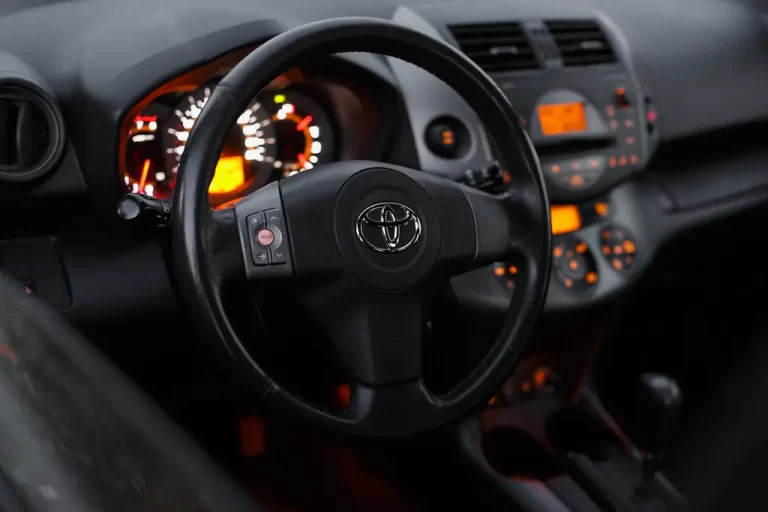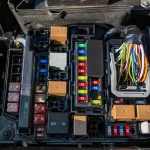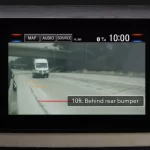Have you noticed your Toyota’s steering wheel suddenly becoming heavy or the EPS warning light glowing on your dashboard? You’re facing one of the most common yet concerning issues in modern Toyotas. The electric power steering system, while innovative, has become a notorious trouble spot for many Toyota owners.
What Is Electric Power Steering and Why Toyota Switched to It
Toyota began transitioning from hydraulic to electric power steering systems in the early 2010s. Unlike old hydraulic systems that used engine-driven pumps, electric power steering (EPS) uses an electric motor controlled by sensors and an electronic control unit (ECU).
The move wasn’t random—EPS offers significant advantages:
- Better fuel efficiency (no constant power drain from hydraulic pumps)
- Variable steering assistance based on your driving speed
- Easier integration with modern driver assistance systems
- Reduced maintenance requirements
But these benefits came with unforeseen reliability issues that have plagued many Toyota models over the years.
Common Toyota EPS Failure Symptoms
Warning Light Illumination
The most obvious sign is the EPS warning light on your dashboard. When this light comes on, your power steering assist may be reduced or completely disabled. This happens when the system detects a malfunction in any of its components.
Toyota’s EPS warning light looks like a steering wheel with an exclamation point. If you see this symbol, take immediate action as driving without power steering can be dangerous, especially at low speeds.
Sudden Heavy Steering
Many Toyota owners report their steering becoming unexpectedly heavy while driving. This symptom often comes without warning—one moment you’re driving normally, and the next you’re struggling to turn the wheel.
A RAV4 owner described it like this: “It felt like I was suddenly steering a truck from the 1970s. The wheel became so heavy I had to pull over immediately.”
Intermittent Assist Loss
Your steering might function normally sometimes and fail at others. This inconsistency makes the problem particularly frustrating and potentially dangerous. Many drivers report that restarting the vehicle temporarily resolves the issue, only for it to return later.
Unusual Noises While Steering
Grinding, whining, or clicking noises when turning the wheel often indicate an issue with the electric motor or its mounting. These sounds typically worsen when making sharper turns.
Most Affected Toyota Models and Years
Certain Toyota models have experienced higher rates of EPS failures than others. Based on complaint data and recall information, these are the most commonly affected:
| Model | Problem Years | Common Issues |
|---|---|---|
| RAV4 | 2014-2015 | ECU failures, system shutdowns |
| Camry | 2015 | Circuit board malfunctions |
| Highlander | 2015 | Sudden assist loss |
| Corolla | 2009-2014 | Intermittent steering issues |
| Scion FR-S | 2013-2016 | Connector corrosion, control module failures |
| Toyota Supra | 2020-2021 | Water damage to electronic components |
The 2014-2015 RAV4s have been particularly problematic, with a significant number of owners reporting complete EPS failures requiring expensive repairs.
Root Causes of Toyota EPS Problems
Manufacturing Defects
In 2015, Toyota recalled approximately 110,000 vehicles due to manufacturing defects in the EPS circuit boards. According to the official recall notice, damaged circuit boards could disrupt communication between sensors and the control module, causing the system to shut down.
The recall affected:
- 2014-2015 RAV4
- 2015 Camry
- 2015 Highlander
Toyota dealers were instructed to replace the affected ECUs free of charge, but some users still reported recurring issues even after repairs.
Electrical System Vulnerabilities
Your Toyota’s EPS system requires stable voltage between 12-14.7V to function properly. Weak batteries, corroded terminals, or alternator problems can cause voltage drops that trigger “EPS Warning” lights and reduce steering assist.
In the 2014-2015 RAV4, low voltage was linked to about 23% of all EPS complaints, making it a significant factor in power steering failures.
Water Ingress and Corrosion
Water intrusion through damaged seals can corrode connectors and sensors in the steering column. A well-documented case involved a 2021 Toyota Supra where moisture in the steering column connector caused erratic EPS behavior, resulting in a costly ECU replacement.
Corrosion is particularly problematic in coastal areas and regions that use road salt during winter months. The salt accelerates the corrosion process, making EPS failures more likely.
Software Issues
Some Toyota EPS problems stem from software glitches rather than hardware failures. In the RAV4 EV models (2012-2014), a separate recall addressed traction motor software that could disengage drive power unexpectedly. This “Check EV System” error indirectly affected EPS functionality by destabilizing the 12V auxiliary system.
The 2015 Major Recall Explained
In March 2015, Toyota issued one of its largest recalls related to power steering problems, affecting 110,085 vehicles. The recall was prompted by a manufacturing defect in the EPS ECUs that could cause sudden loss of power steering assist.
According to Car and Driver’s report, the defect required steering forces up to three times higher than normal when the system failed. This made steering dangerously difficult, especially at lower speeds where power assist is most needed.
The recall notice instructed owners to bring their vehicles to Toyota dealers for ECU replacement at no cost. However, parts shortages extended the repair timeline for many owners, leaving them to drive with potentially dangerous steering conditions.
Diagnostic Process for Toyota EPS Problems
If you suspect an EPS issue in your Toyota, here’s how it’s typically diagnosed:
Error Code Retrieval
Professional technicians use specialized diagnostic tools like the Toyota Techstream or Autoland Vedis II to retrieve error codes from the EPS system. Common codes include:
- C1525: ECU malfunction
- C1526: Motor circuit failure
- U0073: CAN communication error
These codes provide crucial clues about the specific component causing the problem.
Visual Inspection
A thorough visual check of all EPS components can reveal:
- Corroded or damaged connectors
- Water intrusion evidence
- Wiring harness damage
- Battery terminal condition
Voltage and Signal Testing
Using a multimeter and oscilloscope, technicians test:
- Battery output (should be 12.6V at rest, 13.5-14.7V running)
- Sensor signals
- Motor operation
- ECU response to steering inputs
Component Testing
Individual components may be tested:
- Steering torque sensor calibration
- Motor resistance and operation
- Control module functionality
DIY Troubleshooting Steps
While serious EPS issues require professional attention, there are some steps you can take to diagnose and potentially fix minor problems:
Battery Health Check
Since voltage issues can trigger EPS warnings, start with your battery:
- Check battery terminals for corrosion and clean if necessary
- Measure battery voltage (should be 12.6V when off, 13.5-14.7V when running)
- Consider testing the charging system if voltage is low
Check Fuses
Locate the EPS fuse in your Toyota’s fuse box (usually labeled “EPS” or “STR”). A blown fuse could cause complete system failure.
Look for Technical Service Bulletins
Toyota regularly issues Technical Service Bulletins (TSBs) for common problems. These aren’t recalls but provide repair guidance to technicians. You can check if any TSBs exist for your model through the NHTSA website.
Connector Inspection
If you’re comfortable doing so, inspect the steering column connectors for signs of corrosion or damage. Sometimes simply cleaning and reconnecting these can resolve intermittent issues.
Repair Options and Costs
ECU Replacement
The most common repair for Toyota EPS problems is ECU replacement. This typically costs between $800-$1,200 for parts alone in post-warranty models. For example, a 2014 RAV4 owner reported on Reddit paying $1,175 for ECU replacement at a dealership.
Steering Column Assembly
In some cases, the entire steering column assembly needs replacement. This costs $1,500-$2,000 because the motor integration prevents component-level repairs in many Toyota models.
Software Updates
If your EPS issue is software-related, a dealer can perform an update. This typically costs $75-$150 for the diagnostic and programming time.
Aftermarket Solutions
As these vehicles age, more aftermarket options become available. Some independent shops offer refurbished ECUs for around $400-$600, significantly less than dealer prices.
Toyota’s Long-Term Solutions
Toyota has implemented several changes to address EPS reliability concerns:
Enhanced Quality Control
Toyota now mandates third-party testing for EPS ECUs from suppliers like Denso. This additional quality control step helps identify potential defects before components reach production vehicles.
Design Improvements
Newer Toyota models feature sealed connectors with dielectric grease to prevent water damage. The 2024 model year introduced corrosion-resistant materials throughout the EPS system.
Software Enhancements
Toyota has developed more robust fail-safe modes for newer EPS systems. These maintain basic steering assist even during ECU failures, albeit with reduced functionality.
The company is also piloting over-the-air update capabilities for 2025 models to allow remote ECU recalibration, potentially reducing dealership visits for software-related issues.
Is Your Toyota Part of a Recall?
If you own a Toyota with potential EPS issues, check if your vehicle is subject to a recall:
- Visit Toyota’s recall lookup page
- Enter your Vehicle Identification Number (VIN)
- Review any open recalls for your vehicle
You can also check the NHTSA’s safety issues and recalls database by entering your VIN.
If your vehicle has an open recall, Toyota will perform the necessary repairs at no cost to you, even if you’re no longer under warranty.
The Impact on Toyota’s Reputation
The EPS issues have affected Toyota’s standing as a reliability leader. According to financial reports, Toyota’s operating income fell 13.2% in FY2025 Q3, partly due to warranty claims and production halts for EPS-related inspections.
The 2015 recall alone cost an estimated $50 million in parts and labor. More significantly, these issues have damaged consumer confidence in a brand long known for dependability.
Toyota has responded by increasing transparency about these issues and extending warranties for affected components in some cases. However, persistent supply chain bottlenecks continue to impact repair timelines, particularly in hybrid models facing unprecedented demand.
Staying Safe While Dealing with EPS Issues
If your Toyota experiences EPS failure while driving:
- Stay calm and gradually slow down
- Use hazard lights to alert other drivers
- Pull over when safe
- Avoid highways or busy intersections until repaired
Remember that manual steering is still possible without power assist—it just requires significantly more effort, especially at low speeds. Practice turning without power assist in a safe environment so you’ll be prepared if it fails unexpectedly.
While these EPS issues are frustrating, understanding the warning signs and Toyota’s repair programs can help you address problems before they become dangerous. Regular maintenance and prompt attention to steering changes remain your best defense against unexpected power steering failures.














